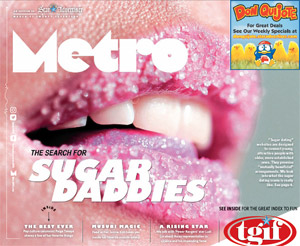The Bubble
By James Nakamura
The war — far from over — smolders on in Stanford’s sleep. In his
dream, the turbulence on the plane permutes into exploding IED’s, and he is thrust back into the desert, hunkered in the LAV when an explosion goes off and the desert flips over in a whorl of flames, smoke and shrapnel.
Stanford’s eyes peel open. His arm — in a cast — feels on fire. His mouth tastes of metal. His tongue is rusting. He remembers waking up on a cot, confused and concussed — a blurry medic hovering overhead like a cloudy skull. “You’re goin’ home,” it grinned.
Thirty so far this month. Thirty casualties and a shaky withdrawal plan scheduled for sometime next year, when a discovery of mineral deposits in the country’s barren expanse of sand, dirt, ash, brick and bone stalls the plan. What was once unforgiving terrain is now gold and copper — $1 trillion worth — all buried underground, with a halo of smoke twisting itself into a dollar sign.
Stanford is reading a science magazine that a general had left behind. One headline catches his eye. “The Elegant and Complex Ways All Bubbles Burst” it reads. Two engineers discuss the complex structure of a bubble — a hemispheric bubble sitting flatly on an obsidian surface.
They are elated at their finding. They’ve recorded many bubbles bursting and watched the footage slowed down. Their findings will make advances in the fields of mechanical and aerospace engineering in ways he cannot fathom.
The engineers he imagines are faceless and otherworldly. The bubble they describe is beautiful. And, delicate. And, remote. How nice, he thinks, to be able to work and slow down time to a point where you can leisurely watch a bubble pop over and over, to watch its alien, transparent membrane retract in slow motion, to see the smaller liquid droplets erupting out from it’s radius; an IED that does no harm — nature’s IED.
The plane rumbles again and begins whining. They begin their plunge, and as they descend, he imagines thousands of bubbles bursting, then millions, and then even more.
What to say to his family who asks him about his time in theater? About how it feels to be back? About his country? About any country?
“What was it like out there?” someone would inevitably ask.
” Instead of simply disappearing completely,” he reads quietly, pressing his fingertips to the glossy, pigmented type, “a large bubble breaks into a ring of smaller bubbles. It’s the universal way all bubbles pop.
“First, the forces acting on it cause the film to fold in on itself as it retracts, trapping a pocket of air. Then tension breaks this pocket of air into a ring of smaller bubbles and droplets. It happens too fast for the human eye to grasp, but it can be replayed in slow motion for you to look at over and over. It’s complex and confusing, and before you know it, the bubble’s gone.”
This is how he decides to answer. For now, it’s the best he can do.
James Nakamura is the author of a book called The Lost Pages. He hopes to find it soon. He’s also Metro‘s creative supervisor.
“A SHARED SPACE” is an ongoing reader-submitted column. To share your story, email coconnor@midweek.com

